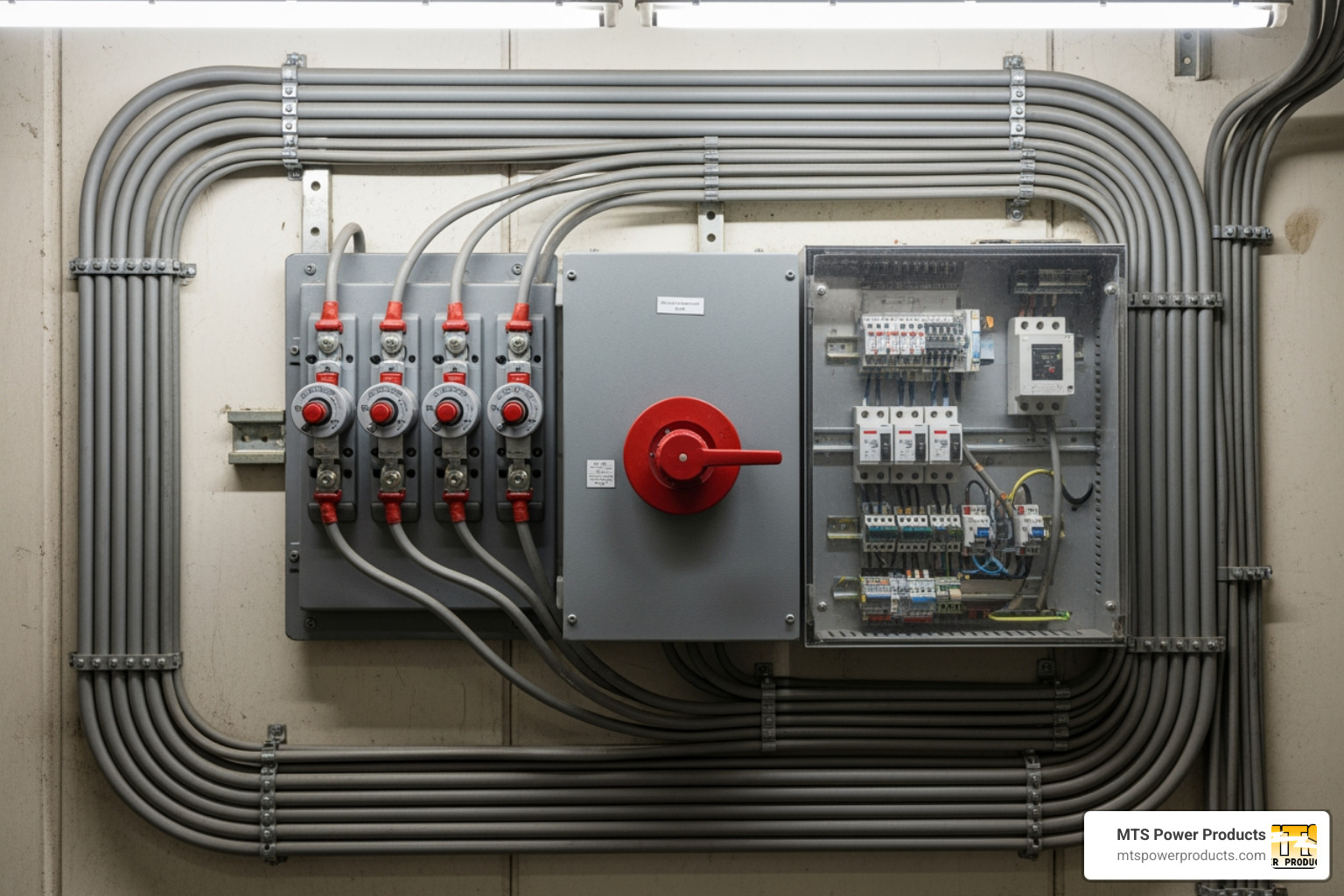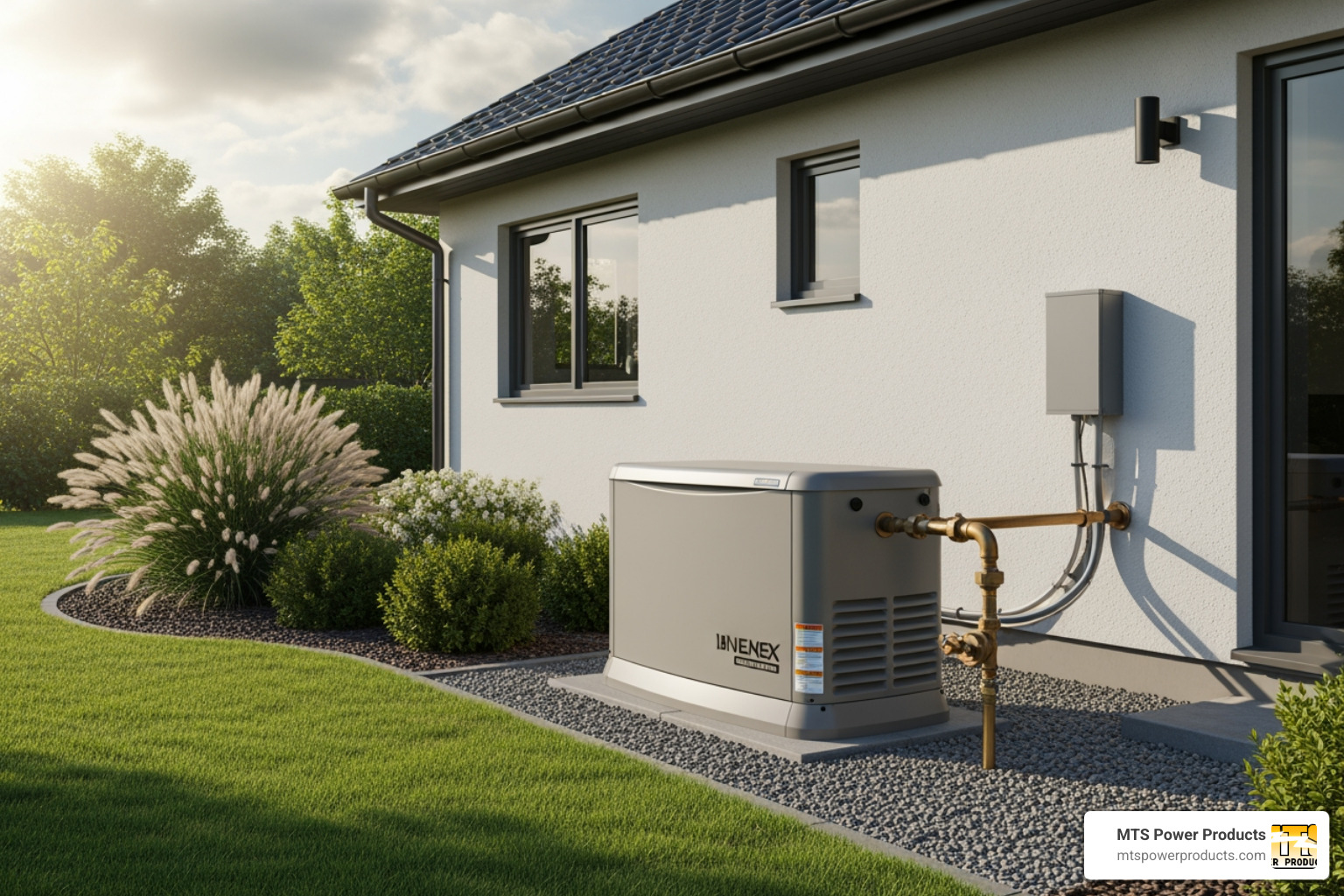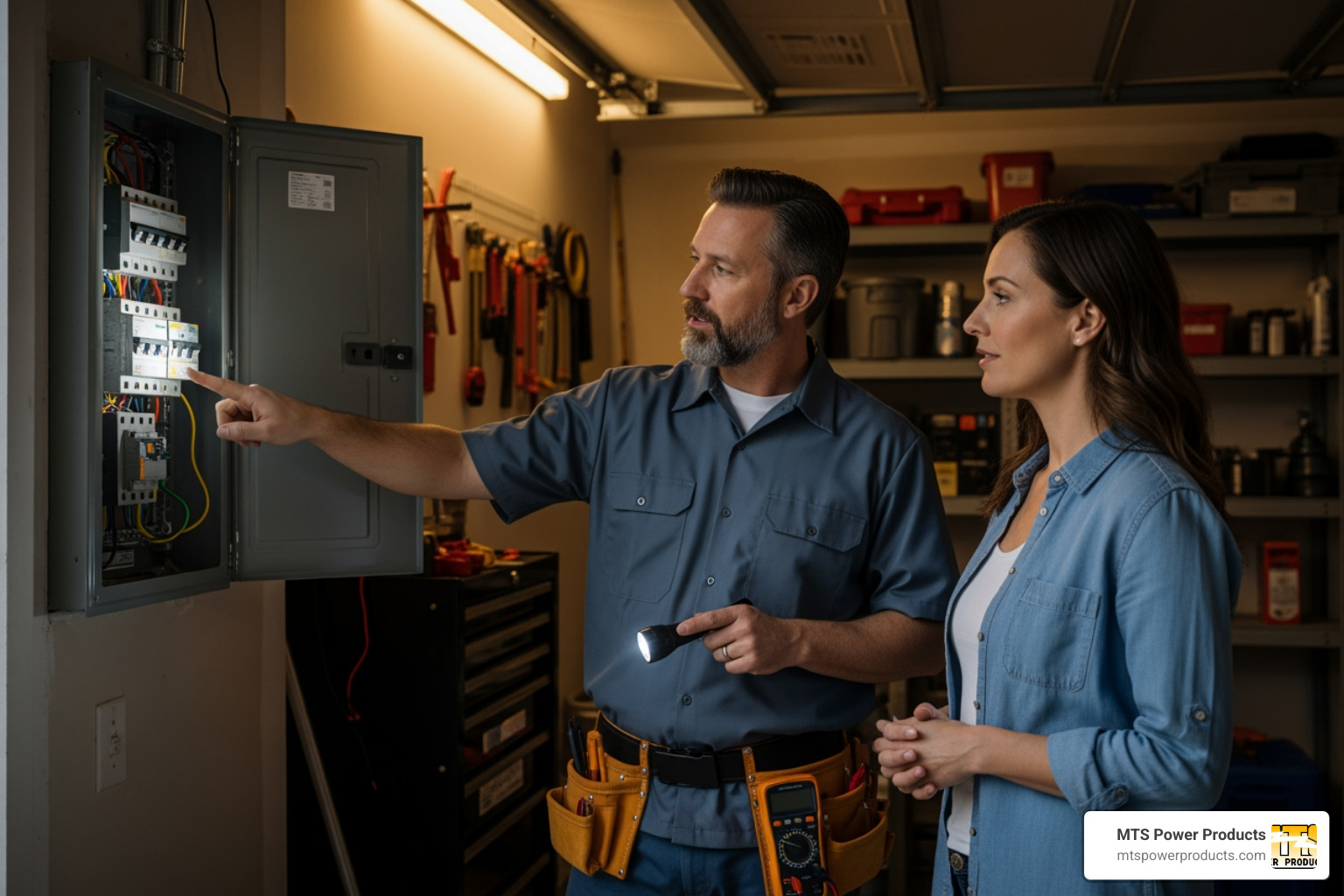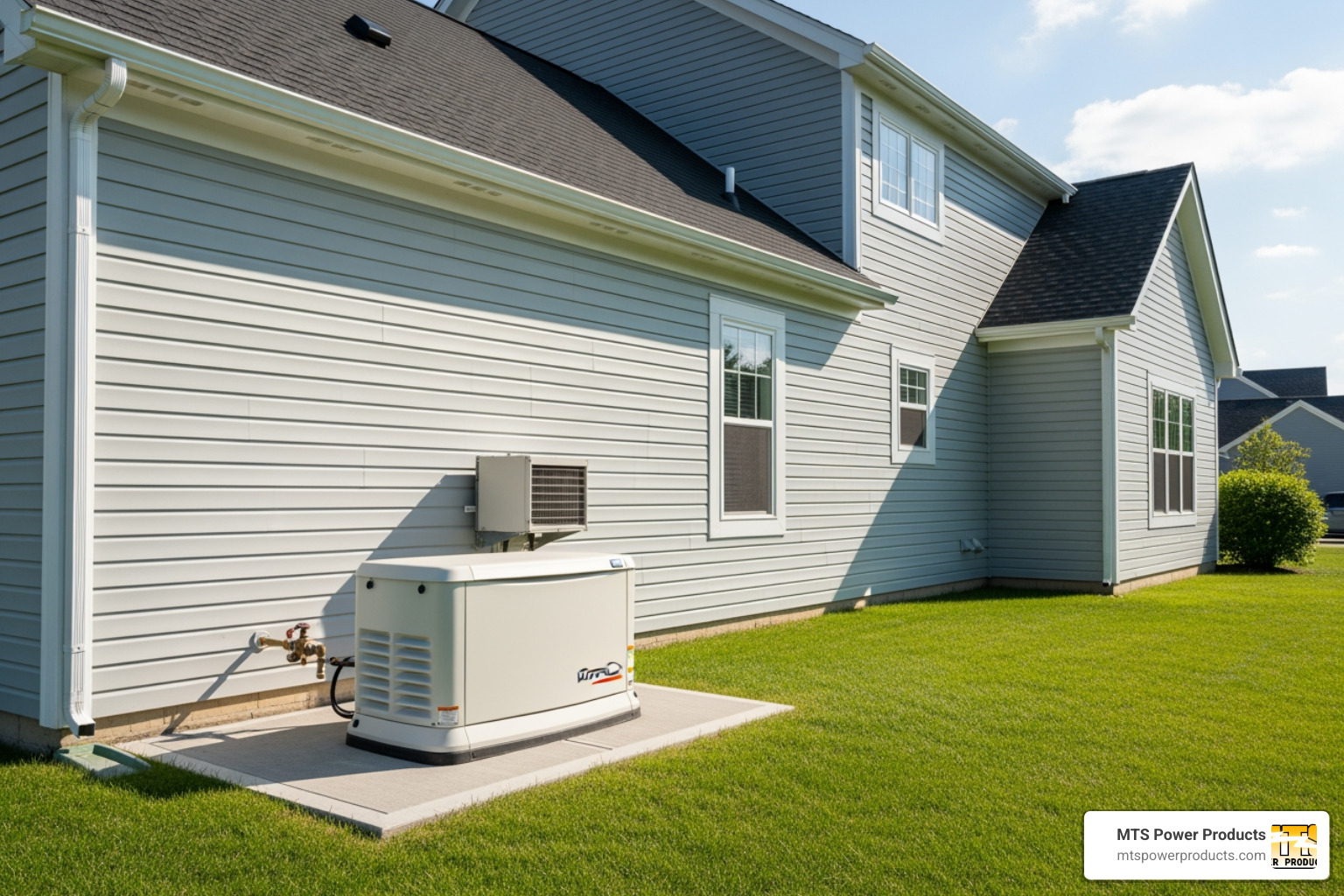
Buy Direct
from the Manufacturer
Sell our Products
Become a Distributor
Discounts
on volume purchases
Visit Us
at our Miami office
from the Manufacturer
Become a Distributor
on volume purchases
at our Miami office

A natural gas generator for home backup power connects to your existing gas line to automatically provide electricity during outages. These standby units eliminate refueling hassles and can run for days or weeks, offering true peace of mind.
Top Natural Gas Generators for Home Use:
Power outages are becoming more frequent and lasting longer. For homeowners, losing electricity means spoiled food, no heating or cooling, and potential danger for those dependent on medical equipment. Natural gas standby generators solve this problem permanently.
Unlike portable generators that require manual setup and constant refueling, these systems activate automatically within seconds of an outage. They are a practical choice for continuous home backup power, eliminating fuel storage concerns, offering lower operational costs, and even increasing your property value. Best of all, you’ll never worry about running out of fuel during an extended outage.

When the power goes out, a natural gas generator for home backup power ensures your family stays safe and comfortable. These systems are designed for convenience and complete peace of mind.

The biggest advantage is a continuous fuel supply. The generator connects to your utility gas line, meaning it can run for days or even weeks without refueling. This provides true 24/7/365 protection. Paired with an Automatic Transfer Switch (ATS), the system offers automatic operation, starting itself and switching power within seconds of an outage. You don’t have to do a thing.
From a practical standpoint, natural gas is cost-effective, typically costing less than propane or gasoline, especially during long outages. It also burns cleaner, producing lower emissions. Furthermore, installing a standby generator can increase your home’s value, as buyers see it as a major asset. For more details, check out our guide on the Convenience of a Natural Gas Generator for Homes.
| Feature | Natural Gas Generator | Propane Generator | Diesel Generator | Battery Storage |
|---|---|---|---|---|
| Fuel Availability | Continuous via utility line | Stored tanks, limited supply | Stored tanks, limited supply | Grid/solar charging, limited capacity |
| Runtime | Indefinite (as long as gas flows) | Limited by tank size | Limited by tank size | Limited by battery capacity |
| Maintenance | Regular oil changes, filter replacements | Regular fuel system maintenance | More frequent specialized maintenance | Low maintenance, battery degradation over time |
| Environmental Impact | Cleaner burning, lower emissions | Cleaner than diesel, still produces emissions | Higher emissions, strong odor | Zero emissions during operation |
| Cost (Fuel) | Generally lower for extended use | Moderate to expensive for long outages | Variable, can be high | None after initial investment |
| Automatic Operation | Yes, with ATS | Yes, with ATS | Yes, with ATS | Yes, seamless transition |
A natural gas generator for home uses an internal combustion engine, designed to run on natural gas, to drive an alternator that creates electricity. The system’s brain is the Automatic Transfer Switch (ATS). It constantly monitors utility power. When it detects an outage, it signals the generator to start. Once the generator is producing stable electricity, the ATS disconnects your home from the utility and connects it to the generator. This transition typically happens in under 10 seconds. When utility power is restored and stable, the ATS reverses the process, returning your home to grid power and shutting the generator down. The system then stands ready for the next outage.
Choosing a natural gas generator for home is a smart financial and environmental decision. As a cleaner burning fuel than diesel or gasoline, it produces fewer harmful emissions, resulting in a reduced carbon footprint. Financially, natural gas offers lower operational costs, especially during emergencies when liquid fuel prices can spike. A professionally installed standby generator is also a long-term investment that can lead to a potential increase in property resale value. For more insights, read our article on why a Small Natural Gas Generator is Economical and Eco-Friendly.
Choosing the right natural gas generator for home use ensures you get the protection you need without overspending. The key is to honestly assess your priorities: do you need to power just the essentials, or do you want your entire home to function as normal during an outage?

Sizing is the most critical step. You must account for both the running watts (continuous power) and starting watts (the initial surge) of your appliances. A professional site survey and load calculation will eliminate guesswork, ensuring you get a system that’s perfectly matched to your needs. For more guidance, see our article on What to Ask When Purchasing a Standby Natural Gas Generator.
First, decide what you need to power. For “survival mode,” you might only need to run the refrigerator, a sump pump, a few lights, and medical devices. This allows for a smaller, more affordable generator. For whole-home coverage, where everything from the AC to the TV stays on, you’ll need a larger unit, often in the 20-24kW range.
Appliances with motors (like AC units and refrigerators) require a large surge of starting watts. Your generator must be able to handle these spikes. Here are some approximate wattages (always check your appliance labels for exact figures):
A professional load calculation is the best way to get this right. Our team at MTS Power Products can perform an expert assessment to recommend a generator size that fits your needs and budget.
Beyond size, certain features define a quality natural gas generator for home.
These features ensure your generator is a reliable, convenient, and long-lasting asset. For more details, visit our page on Natural Gas Standby Generators.
When you’re ready to invest in a natural gas generator for home, the options can be overwhelming. Based on performance, reliability, and customer feedback, we’ve identified the top models to help you make a confident decision.

Whether you need a robust standby unit for your entire home or a flexible portable generator, there’s a solution that fits. Let’s review the top performers in each category.
For comprehensive coverage, the Generac Guardian series is a top choice. The Guardian 24kW model is a #1 seller on Electric Generators Direct, capable of powering most homes, including central air conditioning. Its Smart Home Monitoring feature allows you to check your generator’s status from your smartphone, providing 24/7 oversight. These units typically include a 200-AMP Transfer Switch for seamless power transitions and can often run on natural gas or liquid propane. Pricing for a 22kW model starts around $6,119.
You can explore Generac options at Home Depot’s natural gas generator section.
Trusted by hospitals and the National Weather Service, Kohler brings commercial-grade dependability to residential generators. The Kohler 14kW Standby Generator (MSRP $4,899) is a prime example. Its PowerBoost™ Technology handles large starting loads, like an AC unit, without disrupting power to other appliances. Built with commercial-grade engines and weather-tested enclosures designed to withstand hurricane-force winds, Kohler generators are engineered for extreme reliability.
Learn more about their home generators at Kohler Power’s website.
For flexibility, tri-fuel portable generators are an excellent solution. They can run on gasoline, propane, or natural gas, adapting to whatever fuel is available. The Westinghouse 14,500-Watt Tri-Fuel and DUROMAX 13,000-Watt Tri-Fuel models are best-sellers that offer substantial power with this adaptability. Many include a CO Alert sensor for safety, which automatically shuts down the unit if dangerous carbon monoxide levels are detected. These are perfect for smaller loads, RVs, or connecting to a natural gas generator for home use when needed.
Explore tri-fuel options at DUROMAX’s generator collection.
At MTS Power Products, we specialize in custom generator solutions with our McPherson Controls line, featuring advanced monitoring and safety. Whether you choose a leading brand or a custom system, the goal is reliable backup power.
Investing in a natural gas generator for home involves understanding the full scope of the project, from installation to long-term care. Proper setup is not a DIY job; it requires certified electricians and licensed gas plumbers to ensure safety and compliance with local codes. Knowing the costs and maintenance schedule will help you protect your investment for its 20+ year lifespan.
Installing a natural gas generator for home is a professional job with several key steps. In Miami, FL, doing it right the first time is critical.
For local installation services in Miami, FL, you can find trusted partners like Florida Power House: Find a local installer in Miami.
Be prepared for the total financial commitment. The investment for a natural gas generator for home includes:
Regular maintenance is crucial and includes oil changes, filter replacements, and battery checks. With proper care, your generator will provide reliable protection for over two decades. For those interested in emergency preparedness, explore options for a Natural Gas Emergency Generator. At MTS Power Products, we provide the support and advanced monitoring tools, like our McPherson Controls, to keep your system in prime condition.
Choosing a natural gas generator for home is a big decision. Here are answers to some of the most common questions we hear from homeowners.
A key advantage of a natural gas generator for home is its ability to run indefinitely, as long as the utility’s natural gas supply is active. Unlike generators that rely on stored fuel like gasoline or propane, you won’t have to worry about refueling during an extended outage caused by a hurricane or grid failure. The only limiting factor is the need for periodic maintenance, such as an oil check, which is typically required after a set number of hours of continuous operation.
Modern standby generators are designed to be neighborhood-friendly. Most natural gas generator for home units operate between 60 and 70 decibels (dB), a noise level comparable to a central air conditioning unit or a normal conversation. Manufacturers use sound-dampening enclosures and advanced engine designs to minimize noise. While you’ll know it’s running, it won’t be the disruptive roar associated with older or portable models.
Yes, and this is a primary benefit. When installed with an Automatic Transfer Switch (ATS), your natural gas generator for home is a fully automated system. The ATS constantly monitors utility power. The moment it detects an outage, it signals the generator to start and seamlessly transfers your home’s electrical load to the generator. This entire process happens within seconds, often before you’ve found a flashlight. When grid power is restored, the ATS automatically switches back and shuts the generator down, ensuring 24/7 protection without any manual effort.
Choosing a natural gas generator for home is an investment in your family’s safety and comfort. When the grid goes down, you can have peace of mind knowing your home will remain a powered, safe haven. By understanding your power needs, selecting the right features, and ensuring professional installation, you’re ready to make a smart decision that will last for decades.
At MTS Power Products, we are your partner in power reliability. Based in Miami, Florida, we are a direct source for professional-grade generator sets, parts, and automatic transfer switches. We specialize in custom solutions and offer our own McPherson Controls line, featuring advanced remote monitoring and high safety standards for complete control over your backup power system.
Our team has the expertise to design and deliver the exact solution for your home, whether you need to power a few essentials or your entire house. Centrally located near Miami’s airport and port, we offer worldwide delivery.
There is no better company in South Florida for custom generators and complete power control systems. Ready to take the next step? Explore our range of natural gas powered generators and contact our team for a consultation. Let’s design a backup power solution that fits your home and your lifestyle.
